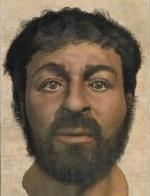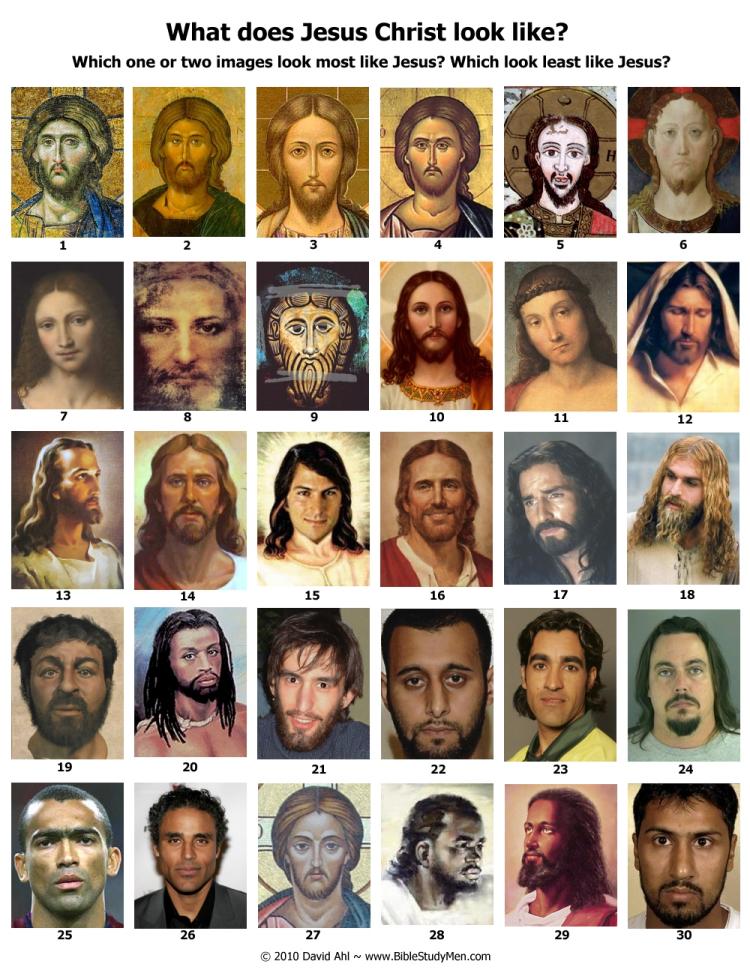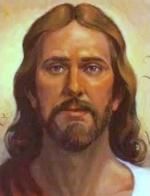 One reason for looking at these seeming silly questions of height, appearance, and occupation is that when you meet someone for the first time today, you get some first impressions, usually in a few seconds, based on their appearance, bearing, and initial ‘small talk.’ Surely people drew similar inferences back in Biblical days. As time went on, Jesus’ reputation preceding him, but it is likely that in the beginning, people looked at Jesus the
same way you might look at a new person who showed up at your club meeting, walked by your house while you’re raking leaves, or cautiously visited your church for the first time.
One reason for looking at these seeming silly questions of height, appearance, and occupation is that when you meet someone for the first time today, you get some first impressions, usually in a few seconds, based on their appearance, bearing, and initial ‘small talk.’ Surely people drew similar inferences back in Biblical days. As time went on, Jesus’ reputation preceding him, but it is likely that in the beginning, people looked at Jesus the
same way you might look at a new person who showed up at your club meeting, walked by your house while you’re raking leaves, or cautiously visited your church for the first time.
The problem with asking these questions about Jesus is that in most cases we don’t and can’t know the answers. We can draw some inferences, make some best guesses, and look at both Biblical and secular writings—and that’s exactly what we’re going to do here. Thousands of web sites are devoted to asking and answering questions like these. An astonishing number are mediocre, poor, or truly awful and many are simply advertisements in disguise. But a good place to start is Unanswered Questions About Jesus.
[PDF files that you can print are available of Introduction and Questions and the 30 Faces of Jesus. Also available is this 5-page Leader's Guide with answers and discussion. Click to download the one(s) you want.]
1. Did Jesus have a beard?
A. Yes B. Beard and mustache C. No, he was clean shaven
Did Jesus have a beard? The Bible doesn’t tell us. In Biblical times, sharp cutting tools were scarce, virtually everyone was bearded, and there would have been no need for anyone to be noted for having one. If Jesus were clean shaven it would surely be mentioned as unusual.
Interestingly, many of the earliest paintings of Jesus show him beardless. Later painters came to show him as a man on the verge of middle age, with dark hair and beard, and an appearance of sorrow and compassion. However, each age has produced its own variant of the Jesus image to meet its own needs, projections, and beliefs.
2. Did Jesus have:
A. Long hair B. Short hair C. Receding hairline
Again, the Bible doesn’t say. However, in 1 Corinthians 11:14, Paul writes “If a man has long hair, it is a disgrace to him.” It seems unlikely that Paul would have written this if Jesus had had long hair.
3. Was Jesus:
A. Short B. Average height C. Tall
The image on the Shroud of Turin (believed by some to be the burial shroud of Jesus) is of a man variously estimated to be 5' 11½" to 6' 2" tall. Tremendous controversy has arisen over the authenticity of the Shroud of Turin and its origins and image are the subject of intense debate among scientists, theologians, historians and researchers. You may wish to review this at Shroud of Turin on Wikipedia.
Jews who lived in the first century were quite short. Researchers have projected average heights in Biblical times at 5' 1" up to as tall as 5' 5". Around 5' 1" to 5' 2" seems to be the best consensus. Writer William Harwood makes the point that if Jesus were really 6' tall (as indicated by the Shroud), his height would have been so remarkable that it certainly would have been mentioned by one or more writers in the Bible.
Harwood also reports, “According to Flavius Josephus, a medieval Jewish historian, Jesus was an old-looking [some sources say “odd-looking”] man, balding, stooped, with joined eyebrows and approximately 135 cm (4' 6") tall.” But, says Harwood, this is based on the standard 46-cm-long regular cubit, an ancient unit of measure. Using the 53-cm special cubit, Jesus’ height would have been about 156 cm (5' 1").
4. Was Jesus:
A. Handsome B. Average C. Ugly
Echoing Harwood, the historian, Robert Eisler, quotes Josephus in Halosis as describing Jesus as “a man of simple appearance, mature age, small stature, three cubits high [4' 6"], hunch-backed, with a long face, long nose, and meeting eyebrows, so that they who see him might be affrighted, with scanty hair ... with a parting in the middle of his head, after the manner of the Nazirites, and with an undeveloped beard.”
The authors of Luke-Acts and John both equated Jesus with the suffering slave (or servant) described by Isaiah 52:13-53:12. Isaiah had written of the Lord’s servant, “His appearance was so disfigured beyond that of any man and his form marred beyond human likeness (52:14) and “He had no beauty or majesty to attract us to him, nothing in his appearance that we should desire him.” (53:2)
Even allowing that John used Luke as a source, why would either author have equated Jesus with such an unfortunate creature? The answer that springs to mind is that they were putting the best possible spin on the reality that the physical description of Isaiah’s suffering slave matched the physical description of Jesus.
5. Could Jesus read or write?
A. Yes B. Very little C. No
Jesus lived long before the day of printed books. Hand-copied scrolls were extremely costly and a carpenter would not have any in his home, so Jesus as the son of a carpenter certainly did not learn to read at home. But he did learn it someplace because Luke states in 4:16-17 that Jesus went into the synagogue and stood up to read the scroll of the prophet Isaiah. The scroll was most likely written in Hebrew and either Jesus or someone else paraphrased/translated it into Aramaic, the common language of the day.
Jesus is frequently quoted as saying, “it is written” and “search the scriptures,” which suggests he could read quite well. Reading and perhaps writing in Hebrew and Aramaic was helpful to getting along in Jerusalem. Because of the Roman occupation of Israel, Jesus may possibly have known some Latin as well. Some people postulate that he also knew Greek, but that’s a bit of a stretch.
6. Was Jesus:
A. Slender B. Average build C. Chubby
If he was a carpenter (see Q 7), he would have had a well-developed muscular body. He is described as eating and drinking in a wide variety of settings and we don’t hear of any illnesses, allergies, or food preferences. He presumably had a powerful voice because he preached to large crowds. We know that no Biblical writer remarked on any special physical characteristics, skin disease, or the like, so we can speculate that physically Jesus was a fairly average man.
7. What was Jesus’ occupation?
A. Carpenter B. Scholar C. Rabbi D. Architect
Nothing is known about Jesus’ middle years. A century after Jesus died, there were many tales about his infancy and childhood. A famous Greek martyr named Justin claimed that Jesus made ploughs and yokes in his father’s workshop.
Most people think that Jesus was a carpenter. Mark, in 6:3 says: “Is not this the carpenter, the son of Mary” but Matthew 13:55 has a slightly different wording: “Is not this the carpenter’s son? Is not his mother called Mary?”
Takumi opines that “it is highly unlikely that Jesus was a carpenter. If we examine the 48 parables that occur in the Gospels, not a single one draws upon the experiences of a carpenter. Three of them refer to buildings (e.g., house divided, foolish builder, unfinished tower), and these may offer support for the idea that Jesus’ father was a builder, not a carpenter.” Or Jesus may have been a builder.
Margaret Starbird writes, “in the Gospels, Jesus is called a tekton, a Greek word that meant not merely a carpenter skilled in making cabinets or furniture but a designer, construction engineer, or architect. A tekton could build a house, construct a bridge, or design a temple.”
And for a view from left field, we have Stanley E. Porter who says, “...the Greek word for ‘carpenter’ in the gospels actually stands for an underlying Aramaic term that is used metaphorically in the Talmud to denote a scholar.”
And then there is Upton Sinclair who wrote in 1952, “it’s also possible that Jesus and his family belonged to a group known as the Sleb, a still existing band of Bedouins, found mostly in Syria, whose ancestry and customs include not only the Essenes but claim to go all the way back to Cain. This would explain the propensity to travel, which Robert Eisler (1931) has argued (in The Messiah Jesus and John the Baptist), claiming that Jesus’ family plied their trade in the timeless manner of the Sleb. Interestingly, the Sleb were known to be accomplished in carpentry, masonry, building and a whole host of skills, and they fit well within the definitions of tekton, the name used to describe Joseph’s occupation. They were also known to be healers.”
8. Was Jesus:
A. Poor B. Moderate income C. Rich
There are many people today such as Oral Roberts, Creflo Dollar, Kenneth Hagin, Tom Brown, C. Thomas Anderson, and John Avanzini who teach that Jesus was rich. Frederick K.C. Price states, “only rich people could take off for 3½ years to preach. The Bible says that Jesus had a treasurer, Judas Iscariot; and he was stealing out of the bag for 3½ years and nobody knew it. Why not? Because there was so much in the bag, that Jesus and the disciples couldn’t tell if anything was missing. If Jesus was poor and didn’t have anything, why did he need a treasury? A treasury is for surplus. It’s not for that which you’re spending. It’s only for surplus—to hold it until you need to spend it.”
Other arguments center around the wise men coming to visit Jesus (in a house!) after his birth and bringing very expensive gifts of gold, frankincense (a fine perfume), and myrrh (an aromatic oil used in healing and embalming). There were probably more ordinary gifts brought too but only these three costly ones are mentioned in the Bible.
On the other hand, supporting the view that he was poor is the fact that Jesus was born in a stable (although there are major questions about that). His parents knew the approximate time of his birth so they could have reserved a place and God could have made sure they had a room but it was to be in a humble place, possible a stable or a cave (Luke 2:22-24). Why did Mary in her praise say, “He has filled the hungry with good things and the rich he has sent away empty.”
Archeological excavations of Nazareth show the village of Jesus’ day was occupied by poor agricultural people. Later, as Jesus grew up, he worked in the trade of a carpenter, not a trade known for its wealth.
In Luke 2:22-24, Jesus is taken to the Temple by his parents where they offered a sacrifice of two pigeons (the sacrifice of a poor family according to Leviticus 12:8.) If they had been rich, they would have had to make a larger sacrifice. If they did not and were rich they broke the law.
There are many other Scripture verses that speak to Jesus not being rich, but let’s just consider his earthly end. He was buried in another man’s tomb, that of a rich man. If Jesus or his family was rich, they surely would have buried him in his own family tomb. But neither his family nor his apostles had the money to buy a tomb.
9. Where did the English name Jesus come from?
The English name “Jesus” was derived from the German version of his name (also Jesus) which came from Latin (Iesus) which came from Greek (Iesous) which originated in the Hebrew name Yeshua—short for Yehoshua (or y’hoshua), which means “help of Jehovah” and is normally translated as Joshua. For more than you ever wanted to know about this, see: Origin of Jesus Name.
10. When was Jesus born?
A. December 25 B. January 6 C. In the spring D. In the fall
A surprising number of people believe that Jesus was born on Dec 25. His actual birthday is unknown, although there are some indicators in the Gospels that it happened in the spring or fall. The early Christian church did not celebrate Jesus’ birth. It wasn’t until 354 AD that the church officially proclaimed December 25 as the birth of Christ. This was not based on any religious evidence but on a pagan feast. Saturnalia was a tradition inherited by the Roman pagans from an earlier Babylonian priesthood and December 25, just after the winter solstice, was when the birthday of the sun god was celebrated. Until then, Eastern Orthodox religions celebrated his birth as late at night on January 6.
There are a number of scriptures, quite convincing (to some), that indicate that John the Baptist was born on 15 Nisan (Jewish 2nd month) which is approximately April 1 by modern reckoning. Jesus was born approx six months later, which would be approx Oct 1. Extensive proof of this is presented at Jesus Birth Date.
What year? Jesus had to have been born either before 4 BC (when Herod the Great died) or in 6 AD (when the historical Census of Quirinius was undertaken). Because both Gospel accounts agree that the birth took place before the death of Herod, Jesus was most likely born around 4 BC or slightly before (5 BC). Lots more at Jesus Birth Year..

In North America, Jesus is most often depicted as being taller than his disciples, lean, with long flowing, light brown hair, fair skin, and light-colored eyes. Familiar as this image may be, it is inherently flawed. A person with these features and physical bearing would have looked very different from everyone else in the region where Jesus lived and ministered. Surely the writers of the Bible would have mentioned such a stark contrast. On the contrary, according to Matthew (26:48), when Jesus was arrested in the Garden of Gethsemane, Judas Iscariot had to indicate to the soldiers who Jesus was because they could not tell him apart from his disciples. This suggests that he was rather ordinary.
Nowhere in the New Testament is Jesus described, there are no known drawings of him, and we have neither a skeleton nor other bodily remains. Thus, our images of Jesus have been left to the imagination of artists and film makers who, in turn, were influenced by the cultures and traditions of their time and location. While Western imagery is dominant, in other parts of the world he is often shown as black, Arab, or Hispanic. And so the question remains, what did Jesus look like?
An answer has emerged from a new field of science: forensic anthropology, which uses cultural and archeological data as well as the physical and biological sciences to study different groups of people. [The above and considerable additional explanation can be found in the article, “The Real Face of Jesus” by Mike Fillon in Popular Mechanics(!), December 2002. Article reprint, text only.]
A group of scientists led by Richard Neave at the University of Manchester (UK) used skulls from Jerusalem from the Biblical era, archeological drawings from the 1st century, and scripture from the Bible along with computer models and clay to reconstruct what they concluded was the best possible representation of Jesus. Neave emphasizes that their recreation is simply that of an average adult man who lived in the same place and at the same time as Jesus. Not everyone agrees, of course, that Jesus would have looked like that. But it is probably a lot closer to the truth than the work of most painters and film makers. On the page of 30 images, this forensic representation is no. 19.
Selected other images from the 30 images above include:
Number 8 is a cleaned-up and colorized image from the Shroud of Turin.
Numbers 1-6, 9, and 27 are images from the 11th to 14th Centuries. No. 9 is the oldest (11th Century) and is stained glass from Wissembourg, France. No. 5 is a Romanian icon, no. 27 is a 13th Century Byzantine mosaic from San Marco, Venice, and no. 2 is a 14th Century Macedonian painting on wood by John Mitropolitan.
Number 7, 10, and 11 are paintings from the 15th to 18th Centuries. No. 7 is by Bernadino Luini and No. 11 is by Raphael.
Numbers 13-16, 20, and 28 are modern 20th Century paintings. Perhaps the best known is no. 13 by Warner Sallman (1941), the smiling Jesus in no. 16 is by Del Parson (2007), while the black Jesus, no. 28, is by Joe Cauchi.
Numbers 12, 17, 18 are actors from movies; no. 17 is James Caviezel from the Passion and no. 18 is an actor in an Iranian film, the director of which felt that Jesus was blond.
Numbers 22 and 30 are wanted Muslim terrorists in the UK, no. 24 is a convicted serial sex offender, and the balance are actors and ordinary people.
|


 One reason for looking at these seeming silly questions of height, appearance, and occupation is that when you meet someone for the first time today, you get some first impressions, usually in a few seconds, based on their appearance, bearing, and initial ‘small talk.’ Surely people drew similar inferences back in Biblical days. As time went on, Jesus’ reputation preceding him, but it is likely that in the beginning, people looked at Jesus the
same way you might look at a new person who showed up at your club meeting, walked by your house while you’re raking leaves, or cautiously visited your church for the first time.
One reason for looking at these seeming silly questions of height, appearance, and occupation is that when you meet someone for the first time today, you get some first impressions, usually in a few seconds, based on their appearance, bearing, and initial ‘small talk.’ Surely people drew similar inferences back in Biblical days. As time went on, Jesus’ reputation preceding him, but it is likely that in the beginning, people looked at Jesus the
same way you might look at a new person who showed up at your club meeting, walked by your house while you’re raking leaves, or cautiously visited your church for the first time.

